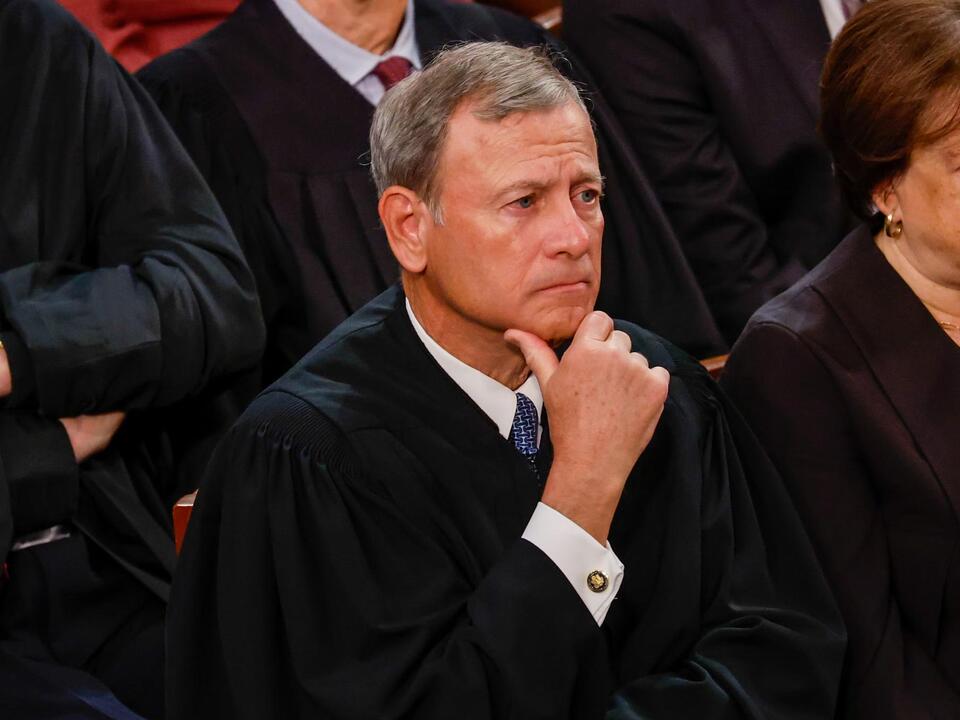Physical Address
304 North Cardinal St.
Dorchester Center, MA 02124
Physical Address
304 North Cardinal St.
Dorchester Center, MA 02124

Chief Justice John Roberts, known for portraying the Supreme Court as a cohesive unit, is now under scrutiny due to a recent leak suggesting that he prioritized aiding Donald Trump in his legal battles. This shift raises alarm about the increasing politicization of the court.
Having led the Supreme Court for nearly 20 years, Roberts is often viewed as a centrist figure, balancing the competing ideologies of the conservative and liberal factions within the court. His past efforts to present the court as politically neutral now appear to be faltering, as insiders reveal that Roberts has played a pivotal role in intertwining political interests with judicial outcomes.
During the current term, Chief Justice Roberts has asserted more control, crafting opinions in some of the court’s most contentious cases. Notably, he expedited Trump’s immunity case despite the concerns of fellow justices and opted not to seek a compromise, as reported by The New York Times.
As a result, Roberts has guided the court into heated political disputes, yielding significant victories for Trump in the process.
In February, when Trump petitioned the court for intervention in his federal election interference case, several conservative justices preferred to postpone arguments until October. This delay would have made it nearly impossible to reach a decision before the election. However, Roberts aligned himself with the court’s liberal justices, advocating for immediate consideration in a memo reviewed by The Times.
Roberts’ support for the liberal faction was short-lived. By June, when Justice Sonia Sotomayor, the senior liberal justice, expressed her willingness to find consensus on the immunity case, Roberts reverted to his usual stance of non-engagement in negotiations. Insiders revealed that this was a significant departure from his customary approach.
In the end, Sotomayor penned a sharp dissent against the 6-3 majority opinion, authored by Roberts, which granted the president protections for actions taken while in office. She described the ruling as “troubling” and noted that it “irrevocably shifted” the relationship between the president and the public.
Roberts did not stop with the immunity case; he also took charge of the ruling concerning the January 6 defendants, which he initially assigned to Justice Samuel Alito. After a month, he unexpectedly assumed responsibility for the opinion without changing its core content, a break from traditional practice.
This decision-making switch coincided suspiciously with reports about Alito’s wife displaying an upside-down American flag, a politically charged symbol, after the Capitol attack, although it is unclear what prompted Roberts’ takeover.
Roberts also authored the controversial unsigned majority opinion regarding whether Trump could remain on the ballot under the 14th Amendment. According to insiders, he emphasized the necessity of presenting a united front in this divisive matter, ultimately persuading all nine justices to agree that Trump could be on the ballot. However, four conservative justices sought a broader ruling, positing that Congress, not the states, should decide on the matter.
In a tie of four to four on the judgment, Roberts opted to side with his conservative colleagues.
The result of this decision-making process led to three liberal justices issuing a “concurring” opinion that critiqued the majority ruling, while Justice Amy Coney Barrett chastised all justices for their inability to reach a consensus in just two short paragraphs.
The Supreme Court, the apex of the U.S. judicial system, was designed to operate outside the sphere of politics. The framers of the Constitution took measures to shield judges from political influence by providing them with lifetime appointments, contingent upon “good behavior.” Unlike elected officials, justices are not beholden to political parties, insulating them from partisan pressures.
However, the Supreme Court has increasingly reflected partisan divides. Any aspirations Roberts had to keep the court beyond the realm of politics have evidently waned this past term, a development that appears to stem from his own leadership.
Source: The New York Times



